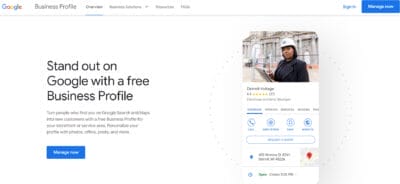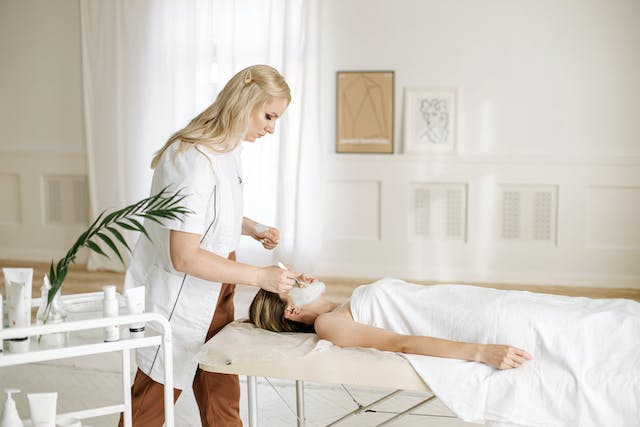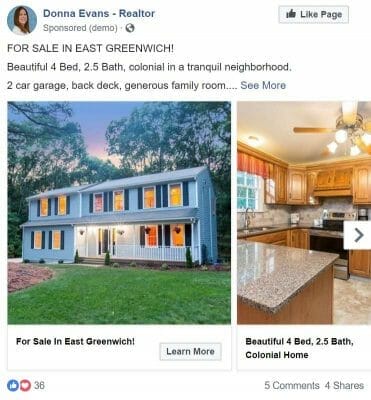Nowadays, many people who are interested in aesthetic treatments are turning to search engines like Google to find trustworthy and reputable clinics. No matter how new your clinic is or how experienced you are as a practitioner, it’s important to understand and implement SEO for aesthetic clinics. This can have a great impact on the growth and success of your business.
Building a strong online presence is not just a choice in today’s competitive market, but it’s absolutely necessary. It may be difficult for the people you wish to assist to find your clinic if you do not have a strong SEO strategy in place. Let’s make sure they can easily find you!
Table of Contents
ToggleUnderstanding SEO
Optimizing your website and online content to rank higher on search engine results pages (SERPs), such as Google, is referred to as search engine optimization, or SEO, resulting in an increase in organic (unpaid) traffic in the end. Understanding SEO is important for any aesthetic clinic hoping to thrive in the competitive online market.
Why does SEO for Aesthetic Clinics Matter?
Visibility, credibility, and trust are essential for aesthetic clinics. Clinics that rank high in search results are experts. Clinics may reach highly targeted audiences with SEO, which is cheaper than traditional advertising. It delivers long-term outcomes and a competitive edge. A well-optimized website can gather organic visitors, avoiding the need for expensive ads. SEO helps aesthetic clinics outperform competitors in search rankings, getting more clients and creating authority.

Now, let us explore the essential elements of SEO and its strategies:
Keywords
Keywords are SEO’s backbone. The most relevant and regularly used search terms for a niche or sector are identified through extensive keyword research. We strategically use these keywords in website content.
Keyword Research and Strategy
The SEO strategy for your aesthetic clinic is based primarily on keyword research. It involves figuring out the precise keywords and phrases that prospective customers use to find businesses that provide similar services to yours. We will discuss the value of keyword research for aesthetic clinics here, as well as the resources and techniques for locating relevant keywords and the necessity of a well-rounded strategy that incorporates both long-tail and short-tail keywords.
Importance of Keyword Research for Aesthetic Clinics
- Keyword research lets you match your website and content to what customers are searching for. Understanding their language and words helps make your website more relevant and precise, improving search results.
- Aesthetic clinics may have an advantage over their competitors in the market if they choose the right keywords. To rank higher and get more relevant traffic, select keywords that are less competitive or specific to your niche.
- Keyword research is what drives content. It helps you write blog posts, articles, and websites that answer your potential clients’ inquiries and establish your clinic as an expert.
- If your clinic serves a specific location, keyword research is essential for local SEO. With the help of location-specific keywords, like the names of cities or neighborhoods, you can draw local customers to your content.
Need help optimizing your aesthetic clinic website?
Tools and Methods for Finding Relevant Keywords
There are a variety of tools and methods you can use for finding relevant keywords. Here are some of them:
Google Search: You can get keyword ideas just by typing into Google’s search bar. When you begin typing a query about your services, autocomplete suggestions—which may contain useful keywords—will appear.

Google Keyword Planner: This free tool from Google provides metrics on keyword competition, search volume, and keyword suggestions. It’s an excellent starting point for keyword research.
SEMrush: A powerful SEO tool that provides in-depth keyword research, competitive analysis, and tracking. It offers insights into keyword difficulty and search trends.
Ahrefs: Known for its backlink analysis, Ahrefs also offers robust keyword research capabilities, including keyword difficulty scores and related keyword suggestions.
Competitor Analysis: Analyzing the keywords that your competitors are targeting can give you insights into the most relevant terms for your niche. You may also use the above tools.
Short-Tail and Long-Tail Keywords
Short-tail keywords are shorter and more general search terms, such as “botox” or “facelift.” Long-tail keywords are longer, more specific phrases, like “best Botox clinic in Los Angeles” or “non-surgical rhinoplasty near me.” Both types of keywords play a crucial role in your SEO strategy:
Short-Tail Keywords: These keywords often have high search volumes but also high competition. They are essential for reaching a broad audience and establishing your clinic as a reputable source in your field.
Long-Tail Keywords: Long-tail keywords are more specific and have lower search volumes, but they often convert better because they reflect user intent more precisely. They are valuable for attracting potential clients who are closer to making a decision about their aesthetic treatments.
On-Page SEO for Aesthetic Clinics
On-page SEO involves optimizing individual web pages on your aesthetic clinic’s website to improve their search engine rankings and enhance the user experience. Here are some key on-page optimization techniques specifically tailored for aesthetic clinics:
Title Tags, Meta Descriptions, and Header Tags
Title Tags: These are the headlines that appear as clickable links in search engine results. Each page on your website should have a unique and descriptive title tag that includes relevant keywords. For example, the title tag for a page on dermal fillers might be “Best Dermal Fillers in [Your Location] | Aesthetic Clinic.”
Meta Descriptions: Meta descriptions are short, concise descriptions of the page’s content that appear beneath the title tag in search results. Create compelling meta descriptions that encourage clicks while also including relevant keywords. For example, “Discover the most advanced dermal filler treatments at our [Location] clinic.”

Header Tags (H1, H2, H3): Use header tags to structure your content. The H1 tag represents the main heading, and H2 and H3 tags subheadings. Incorporate keywords naturally in these headers to signal the content’s relevance to search engines.

Content Quality and Relevance
High-quality, informative content is a crucial aspect of on-page SEO. Create content that addresses the needs, questions, and concerns of your ideal clients. Discuss different aesthetic treatments, their benefits, potential risks, and aftercare instructions. Include real-life examples, case studies, and client testimonials to build trust.
Search engines reward websites that offer valuable content to users. Content optimization entails skillful keyword usage, structured content creation, and periodic updates to maintain relevance.
Image Optimization and Alt Text
Aesthetic clinics often use images to showcase their services and results. Optimize these images for SEO by compressing them to reduce page load times, which can positively impact rankings. Additionally, include descriptive alt text for each image, incorporating keywords when relevant. Alt text is not only good for SEO but also improves accessibility for users with disabilities.

Internal Linking for a Better User Experience
Internal linking involves linking to other pages within your website. It enhances the user experience by allowing visitors to navigate seamlessly through your content and find relevant information. Internal linking also distributes link equity across your site, benefiting SEO.
When creating new content, look for opportunities to link to existing pages that provide additional information or context. For example, if you’re writing about a specific type of treatment, you can link to related articles about its benefits, risks, or before-and-after photos.
Ensure that the anchor text (the text used for the link) is descriptive and relevant to the linked page. For instance, instead of using “click here,” use anchor text like “learn more about Botox injections” to provide clarity.
Off-Page SEO
Off-page SEO is focused on external factors that influence a website’s ranking, primarily through the acquisition of backlinks—links from other websites to your own. High-quality backlinks from authoritative sources can significantly enhance a site’s search engine ranking. Social media presence and mentions also play a role in off-page SEO.
Building Backlinks
Backlinks, also known as inbound or incoming links, are one of the most critical elements in SEO. They play a pivotal role in search engine rankings and are considered a vote of confidence and authority for your website. In the context of an aesthetic clinic, acquiring high-quality backlinks can significantly boost your online visibility and credibility. Here, we’ll explore the role of backlinks in SEO and provide strategies for building them.
The Role of Backlinks in SEO
Backlinks are valuable for several reasons:
Authority and Credibility: Search engines like Google view backlinks as endorsements from other websites. When reputable and authoritative sites link to your content, it signifies that your content is trustworthy and valuable.
Improved Rankings: Backlinks are a crucial ranking factor. The more high-quality backlinks your site has, the higher it is likely to rank in search results. This is particularly important in a competitive field like aesthetic clinics.
Increased Traffic: Backlinks not only contribute to better search rankings but also bring direct referral traffic from the linking websites. If a well-known beauty or healthcare publication links to your clinic, their readers are more likely to visit your site.
Strategies for Building High-Quality Backlinks
Reaching Out to Local Partners
Partner with local businesses that complement your services, such as spas, salons, or fitness centers. Collaborative promotions or events can lead to natural backlinks when they mention your clinic on their websites.
Sponsor local events, charity drives, or community initiatives. Often, event organizers will feature sponsors on their websites, providing you with valuable backlinks.
Participate in local business associations and chambers of commerce. These organizations often have online directories where members’ businesses are listed, creating opportunities for backlinks.
Collaborating with Industry Publications
Create high-quality, informative content related to aesthetics and health. Reach out to reputable industry publications, beauty blogs, and health websites to offer them guest articles or interviews. In exchange, they may link to your clinic’s website.
Consider sharing your expertise through podcasts, webinars, or speaking engagements. These appearances can lead to mentions and backlinks on the websites of the hosts or event organizers.
Influencer Marketing
Collaborate with beauty and wellness influencers who have a substantial online following. Influencers can mention your clinic in their content, whether it’s through blog posts, social media, or YouTube videos, generating both direct traffic and backlinks.
Ensure that the influencer’s content aligns with your clinic’s values and services. Authenticity and relevance are key to the success of influencer partnerships.
Remember that influencer marketing is a two-way street. You can provide influencers with free treatments or discounts in exchange for mentions and backlinks.
When building backlinks, always focus on quality over quantity. High-quality backlinks from authoritative and relevant websites hold more weight in SEO than numerous low-quality ones. Regularly monitor your backlink profile to ensure the links are genuine and continue to add value to your clinic’s online presence. By implementing these strategies, you can strengthen your clinic’s online authority and improve its search engine rankings in the highly competitive field of aesthetic clinics.
Technical SEO
This aspect of SEO concentrates on optimizing the technical attributes of a website. It involves ensuring an organized site structure, generating XML sitemaps, and employing schema markup. Technical SEO also deals with issues like site speed, mobile optimization, and security (HTTPS).
Technical SEO involves optimizing the technical aspects of your website to enhance its search engine visibility and overall performance. Here are some specific technical SEO tips and strategies tailored for aesthetic clinics:
Mobile-Friendly Design
Ensure that your website is responsive and mobile-friendly. With the increasing use of mobile devices, Google prioritizes mobile-friendly sites. Test your site’s mobile-friendliness using Google’s Mobile-Friendly Test tool.
Page Speed Optimization
Page load speed is a critical ranking factor and directly impacts user experience. Optimize your website for speed by compressing images, enabling browser caching, and using content delivery networks (CDNs). Tools like Google PageSpeed Insights can help identify areas for improvement.
Secure Website (HTTPS)
Ensure your website is secure by using HTTPS. This is not only important for user trust but also a ranking factor for search engines. Acquire an SSL certificate for your website to enable secure browsing.
Site Architecture
Create a logical and user-friendly site architecture. This makes it easier for both search engines and users to navigate your website. Here’s SEMrush‘s visual example of a website’s architecture

Local SEO for Aesthetic Clinics
Local SEO is a vital component of your aesthetic clinic’s digital marketing strategy, especially if you serve a specific geographic area. This section explores the local aspect of aesthetic clinics and provides insights into essential local SEO strategies, including Google My Business optimization, using location-specific keywords, and encouraging online reviews.
Aesthetic clinics are inherently local businesses. Clients seeking aesthetic treatments often look for clinics in their immediate vicinity, making local SEO particularly relevant. Whether you have a single location or multiple branches, catering to the local aspect of your clinic is essential. Here’s how you can optimize your clinic’s online presence for local SEO:
Google My Business Optimization
Claim and verify your Google My Business (GMB) listing. This is a fundamental step in local SEO for aesthetic clinics. Your GMB profile is displayed prominently in local search results and Google Maps.

Ensure that your GMB listing is complete and accurate. Provide essential information such as your clinic’s name, address, phone number, website URL, business hours, and high-quality images of your clinic.
Write a compelling business description that conveys your clinic’s core services and unique selling points. Be specific and engaging to entice potential clients.
Encourage clients to leave reviews on your GMB listing. Respond to reviews, both positive and negative, with professionalism and gratitude. This demonstrates your commitment to client satisfaction.
Using Location-Specific Keywords
Incorporate location-specific keywords into your website’s content, meta descriptions, and title tags. For instance, if your clinic is in Los Angeles, use keywords like “aesthetic clinic in LA” or “best Botox treatments in Los Angeles.”
Create location-based landing pages on your website to target different areas or neighborhoods you serve. Each landing page should contain tailored content and location-specific keywords.
Encouraging Online Reviews
Online reviews are a critical aspect of local SEO. Encourage satisfied clients to leave reviews on platforms like Google, Yelp, and Facebook. Positive reviews can significantly impact your clinic’s online reputation and visibility.
Respond to reviews, both positive and negative, in a timely and professional manner. Address concerns and thank clients for their feedback. This demonstrates your commitment to client satisfaction.
Avoid fake reviews or incentivizing reviews in violation of platform guidelines. Authenticity is crucial for maintaining trust with both clients and search engines.
User Experience (UX)
A positive user experience is increasingly influential in SEO. Search engines consider factors such as page load times, mobile responsiveness, and user engagement. Websites that provide a superior UX tend to rank higher in search results.
Here are some best practices to enhance user experience:
Intuitive Navigation
Design a clear and intuitive navigation structure. Users should easily find what they’re looking for without confusion.
Mobile Responsiveness
Ensure your website is responsive to various devices, especially mobile phones and tablets.
Page Load Speed
Optimize your website for fast loading times. Users are more likely to leave a site if it takes too long to load.
Remember, a positive user experience is an ongoing effort that requires regular evaluation and adaptation to changing user expectations and technological advancements.
Analytics and Monitoring
SEO practitioners rely on various tools and analytics to track a website’s performance. This data is indispensable for making adjustments to the SEO strategy and gauging the effectiveness of different tactics.
Here are some best practices for SEO analytics and monitoring specific to aesthetics clinics:
Analytics
Keyword Tracking: Monitor the performance of your targeted keywords. Track rankings, changes over time, and the competitiveness of these keywords.
Conversion Tracking: Implement conversion tracking to measure the effectiveness of key actions, such as appointment bookings, form submissions, or calls.
User Behavior Analysis: Utilize tools like Google Analytics to analyze user behavior on your site. Understand which pages are most popular, how users navigate, and where they may be dropping off.
Monitoring
Regular SEO Audits: Conduct regular SEO audits to identify technical issues, such as broken links, duplicate content, or issues with meta tags.
Local Business Listings: Monitor and update your business information on local directories and review sites. Consistent and accurate information helps with local SEO.
Review Monitoring: Keep track of online reviews and ratings. Positive reviews can enhance your online reputation, while negative ones should be addressed promptly.
Social Media Monitoring: Monitor social media platforms for brand mentions and engagement. Social signals can indirectly influence SEO.
404 Errors and Redirects: Regularly check for 404 errors and ensure proper redirects are in place. Broken links can negatively impact user experience and SEO.
Reporting and Documentation: Regularly generate and document SEO reports. This documentation can help track progress over time and provide a reference for future strategies.
Final Thoughts on SEO for Aesthetic Clinics
Having a strong SEO strategy is really important for the success of aesthetic clinics in today’s competitive online world. From carefully researching keywords to optimizing your website both on and off-page, technical SEO, local SEO, and enhancing the user experience, each aspect helps boost your visibility, credibility, and trust. By incorporating helpful techniques such as optimizing images, creating internal links, and obtaining high-quality backlinks, clinics can enhance their online authority.
In addition, it’s extremely essential to pay attention to local SEO elements. This means making sure your Google My Business listing is fully optimized and encouraging people to leave online reviews. Doing these things will help you attract a targeted audience in your local area.
All things considered, a well-implemented SEO strategy not only improves online visibility but also cultivates a favorable user experience, supporting the steady expansion and prosperity of aesthetic clinics in the current digital era.
Start your SEO journey to build stronger connections with your patients. Schedule your free strategy session now! Learn how utilizing Google Ads can also help you in your business.
Interested in learning more? Read more related articles on how SEO can boost your visibility: Case Study: Personal Training SEO Case Study






